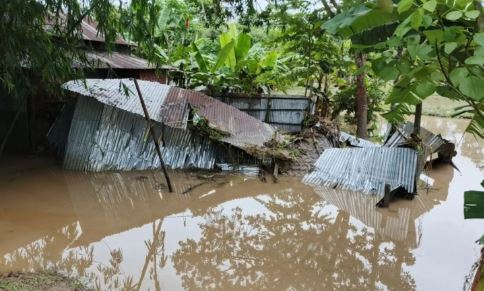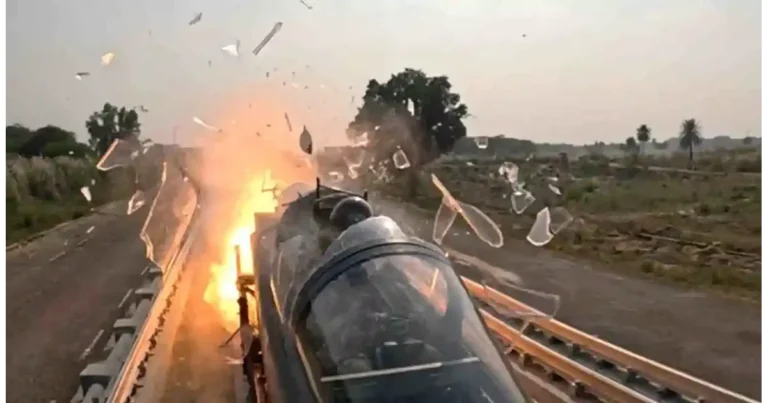
Unrelenting Downpour Ravages the Hills
Darjeeling’s serene hills, often called the “Queen of the Hill,” were left battered and stunned after a relentless 12-hour downpour. The heavy rains unleashed a series of powerful landslides across Mirik, Sukhiapokhri, Darjeeling, and neighboring regions from Sunday night into Monday. Tragically, over 20 lives, including those of children, were lost, with many more injured. The disaster also severed key transportation routes, leaving numerous villages isolated and hundreds of tourists stranded in hotels and homestays.
The Aftermath: A Landscape Transformed
What once were mist-covered slopes transformed overnight into scenes of destruction—flattened hamlets, partially buried roads, shattered homes, and overturned vehicles. Survivors have begun the arduous task of clearing rubble and searching for missing family members, despite persistent rainfall and unstable terrain hindering rescue operations.
Pema Bhutia, a tea estate worker from Mirik, described the catastrophe with disbelief: “We have experienced floods and storms before, but nothing like this. It was as if the entire hill collapsed in a massive wave of earth within minutes.”
Ongoing Rescue Efforts Amidst Challenges
Rescue operations mobilized swiftly, involving district officials, police, disaster response teams, and volunteers. Battling fog and drizzle, they used excavators and coordinated human chains to sift through mud and debris. A local school was transformed into a relief shelter, providing refuge to nearly 300 displaced individuals, while volunteers served hot meals.
Advanced technology, including drones, was deployed to survey damage in hard-to-reach villages. Rohit Chhetri, a civil defence team member near Teesta Bazar, shared, “Since Saturday, we haven’t gone home. We’ve lost friends, but despite the unstable ground, the rescue must continue because people depend on us.”
Tourists Stranded but Stepping Up
Many tourists who had come for a post-Durga Puja break remain stranded, confined to hotels by blocked roads and landslides. Yet, some have chosen to aid the rescue effort. Anjali Das, visiting from Howrah, expressed, “The locals have been incredibly kind. Helping out with relief kits is the least we can do.”
Infrastructure Disrupted, Communities Cut Off
The deluge crippled major routes such as National Highways 55 and 10, isolating remote villages and cutting off access to Siliguri. Police issued warnings to tourists to avoid travel and provided helpline numbers for assistance.
Praveen Sinha, a Kolkata tourist caught in Mirik, recounted the harrowing experience: “Around 2 a.m., a deafening noise shook the ground. By morning, the road was obliterated beneath mud and fallen trees. We are completely cut off.” Many others faced sleepless nights, power outages, and sporadic phone connectivity.
Local tour operators confirmed hundreds of visitors remain stranded in Kalimpong and Mirik, emphasizing ongoing coordination with authorities to ensure guest safety during this peak season.
Economic and Social Impact
Beyond human losses, the disaster has severely impacted the local economy. Tea gardens suffered flooding and soil erosion, with vital culverts and supply routes washed away, disrupting livelihoods and slowing relief efforts. Markets and shops in Darjeeling town closed, and the iconic Darjeeling toy train service between Darjeeling and Ghum was temporarily suspended. Popular tourist sites such as Tiger Hill, Rock Garden, and Batasia Loop were also closed by the Gorkhaland Territorial Administration.
Officials have urged anyone in affected areas or stranded tourists to reach out to police control rooms. An appeal for blood donations and material aid to support relief camps has been issued.
Community Solidarity and Hope Amid Crisis
The response from locals has been heartening. Monks from nearby monasteries distributed biscuits and milk, students swept streets and collected donations, and volunteers formed supply chains to deliver essentials to stranded families. A rescue worker shared an inspiring moment: “We found a child alive beneath the debris this morning. That hope fuels our determination.”
Officials caution that the ground remains unstable and continued rainfall may trigger further landslides. Plans for helicopter assistance are underway, weather permitting, to evacuate stranded residents and deliver supplies. Coordination with state agencies focuses on search and rescue, restoring communications, and reopening roads.
Resilience Rooted in History
The trauma of recent events echoes past tragedies. Karma Sherpa, a local taxi driver aiding relief work, reflected, “Our town has endured disasters before—hundreds died in 1968, friends were lost in 2015. Every time the hills fall, we rise again.”
As dusk settles over Darjeeling, the community waits for clearer skies and safer roads. For now, the hills remain shrouded in fog and silence, marked by loss but also by the steadfast spirit of recovery.






